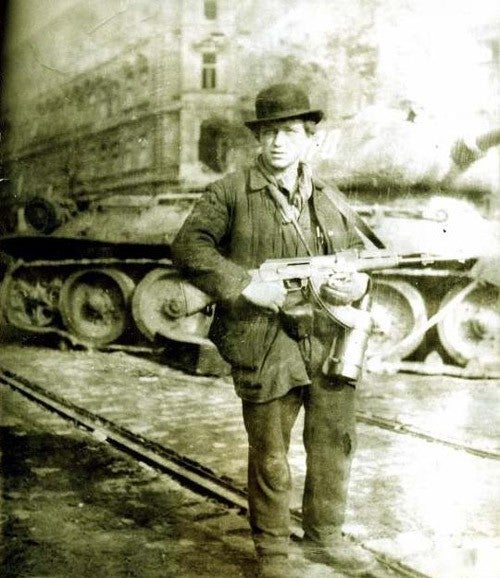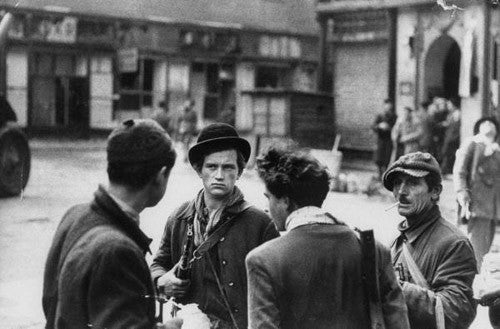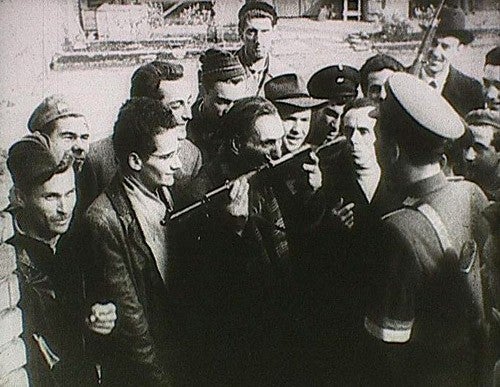Today marks the anniversary of the Hungarian Revolution of 1956. This was the first major armed conflict that featured the AK-47, and the first conflict in which it was used by both sides. The photo above shows a dapper young Hungarian revolutionary named József Tibor Fejes who captured an AK-47 and became the first of many revolutionary icons to be photographed with the rifle. C.J. Chivers writes in The Gun (Page. 224-225) …
In the quiet of a city exhaling, a quintessential sight of the past half-century appeared for the first time. Outside the shattered facades of the buildings, rebels roamed the streets, posing for news photographers. A few of them carried AK-47s. Which Hungarian rebel first captured an AK-47 and turned it against the army that created it cannot be said. Thousands of men fought in Budapest, and Soviet soldiers were repelled and forced to abandon equipment in many places, just as they left behind some of their dead. But the streets around the Corvin Theater were where the rebels’ images were made. The names of most of these men were not recorded. At least one had his back to the camera; his identity is anybody’s guess. But one man’s name was remembered: József Tibor Fejes, twenty-two years old, fresh-faced, sharp-eyed, purposeful, and seemingly unafraid.
On at least one day, Fejes dressed in a dark suit. On others, he was less formal. One picture showed him wearing trousers with their left knee torn. One item in his wardrobe was consistent: he wore a bowler, tilted to one side. Fejes was the worker who had been seen during the fighting wearing his hat. Keménykalapos, his colleagues called him; the man in the bowler hat. Fejes’s roguish confidence made him a darling of the photographers, including Michael Rougier of Life, who snapped a crisply focused frame of the rebel facing the lens. In it, Fejes stood with other insurgents, an AK-47 slung beside his left arm. The AK-47 was destined to become a symbol of resistance fighters almost everywhere, a weapon with innumerable spokesmen. Fejes had nonchalantly assumed the requisite pose and begun to flesh out this historical role. He did so before Fidel Castro, before Yasir Arafat, before Idi Amin. He was years ahead of the flag of Zimbabwe, which would expropriate the AK-47 as a symbol. He was ahead of Shamil Basayev and Osama bin Laden, who would convert the product of an atheist state into a sign of unsparing jihad. József Tibor Fejes was the first of the world’s Kalashnikov-toting characters, a member of a pantheon’s inaugural class.
There is no evidence the AK-47 was used in the Korean War which ended months before the Hungarian Revolution took place. The AK-47 is said to have been used by Soviet troops in very limited numbers during the Uprising of 1953 in East Germany, but this uprising lasted just one day and consisted of protests and strikes (verses tanks and machine guns). It was not until 1962, six years after the Hungarian Revolution, that the first AK-47 was captured by Western troops when Dutch troops stumbled upon and surprised an Indonesian Special Forces team in Western New Guinea (The Gun, C.J. Chivers, page 258).
Thanks to Zoltan of Kalashnikov.hu for the photos.
 Your Privacy Choices
Your Privacy Choices


